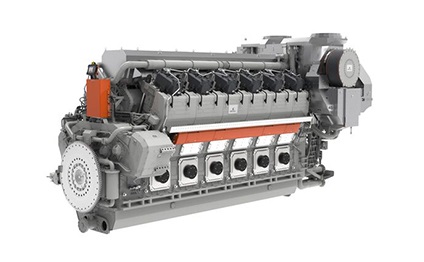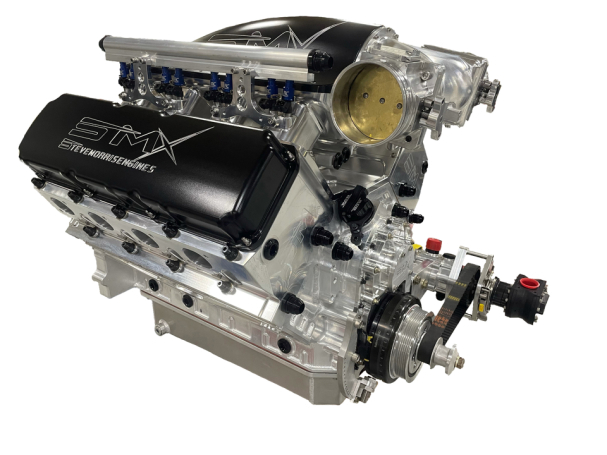The Pursuit for Ultimate Driving Power: Checking Out the Peak of Engine Efficiency and Technological Advancements in the Automotive Sector
In the realm of automobile design, the quest of maximum driving power has been an unrelenting mission that has actually unfolded through the development of engine design and the integration of cutting-edge technologies. From the careful workmanship of combustion engines to the rapid innovations in electric propulsion systems, the vehicle industry stands at the cusp of a brand-new era identified by unprecedented efficiency capacities.
Evolution of Engine Design

In addition, the assimilation of turbocharging and turbo charging modern technologies has transformed engine design by improving power without considerably increasing engine size. These forced induction systems compress the consumption air, enabling for even more fuel to be combusted, thereby creating higher power output from a smaller sized engine. This improvement has been specifically vital in boosting the efficiency of smaller sized variation engines while keeping gas efficiency criteria.

Performance-Enhancing Gas Technologies
The application of sophisticated fuel modern technologies has substantially added to improving engine efficiency in contemporary lorries. From traditional fuel and diesel to innovative biofuels, artificial fuels, and hydrogen, the vehicle industry is witnessing a transformation in fuel options. Biofuels, stemmed from renewable resources like corn, sugarcane, or algae, deal boosted and reduced discharges engine effectiveness. Artificial fuels, created via chemical processes, give high octane rankings, enhancing power output. Hydrogen fuel cells, although still in the early phases of fostering, show excellent guarantee because of their zero-emission nature and capacity for high performance. Furthermore, gas additives and detergents are being formulated to clean engine components, maximize burning, and reduce friction, thus enhancing general car performance. With continuous study and growth, the quest for the ultimate driving power proceeds, as designers make every effort to unlock the full potential of performance-enhancing fuel technologies in the automobile market.
Innovations in Electric Propulsion
Substantial strides in electrical propulsion modern technology have actually changed the automobile industry, paving the way for a new period of effective and sustainable transport. Electric vehicles (EVs) are acquiring appeal due to their ecological advantages and improvements in battery innovation, allowing longer driving arrays and shorter billing times. Makers are spending greatly in r & d to improve the efficiency of electrical propulsion systems, concentrating on raising power result, boosting energy effectiveness, and lowering general weight.
One remarkable development in electric propulsion is the advancement of innovative electrical motors that deliver greater torque and look what i found power thickness, resulting in improved acceleration and total driving efficiency. In addition, regenerative stopping systems have been improved to keep and capture power during deceleration, more boosting the effectiveness of EVs.
Furthermore, the integration of clever technologies, such as expert system and anticipating analytics, is enhancing the administration of electric propulsion systems, guaranteeing ideal efficiency under various driving problems. These advancements in electrical propulsion are reshaping the automotive landscape, driving the industry in the direction of a more sustainable and electrified future.
Effect of Computational Fluid Characteristics
With developments in electric propulsion pushing the limits of automotive innovation, the assimilation of Computational Liquid Characteristics is playing a crucial duty in enhancing wind resistant efficiency and boosting overall efficiency in automobile layout. Computational Liquid Dynamics (CFD) involves making use of computer system simulations to assess the circulation of air around a lorry, enabling designers to anticipate exactly how layout adjustments will affect aerodynamics without the need for costly physical models. By precisely modeling airflow patterns, CFD permits the improvement of lorry shapes to decrease drag, boost air conditioning, and improve stability.
CFD allows engineers to maximize air movement around components such as radiators, engine bays, and wheel wells, adding to boosted performance and general driving experience. In final thought, the assimilation of Computational Fluid Characteristics stands for a substantial action forward in the quest for ultimate driving power and performance in the automotive sector.
Future Patterns in Engine Innovation
In the dynamic landscape of automobile engineering, cutting-edge advancements are forming the future trajectory of engine development. The future of engine design is marked by a strong focus on sustainability, performance, and effectiveness. Manufacturers are increasingly concentrating on establishing engines that not just deliver high power results however also focus on ecological duty by minimizing exhausts and enhancing fuel effectiveness.
One popular pattern in engine technology is the surge of pop over to this site electrification. Crossbreed and electric powertrains are gaining traction as sensible options to typical burning engines. These technologies offer the possibility for considerable decreases in carbon emissions and boosted power efficiency, aligning with international efforts to deal with climate adjustment.
Moreover, innovations in materials science and manufacturing methods are enabling the production of lighter and more long lasting engine components. This change towards lightweight materials such as carbon fiber and light weight aluminum alloys contributes to improved performance and gas economic situation.
Final Thought
To conclude, the pursuit of best driving power in the automobile market continues to drive innovations in engine style, gas innovations, electric propulsion, and computational liquid characteristics. The advancement of these modern technologies is forming the future of engine development, leading the means for much more effective and powerful cars (engines for africa). As the sector proceeds to push the boundaries of what is possible, we can anticipate to see a lot more cutting-edge growths in the quest for peak weblink efficiency
One of the vital landmarks in engine design development is the shift from standard carbureted engines to modern-day fuel-injected systems. By specifically metering the gas distribution to each cyndrical tube, fuel-injected engines enhance combustion, resulting in far better performance and lowered environmental influence.
Additionally, the integration of turbocharging and turbo charging modern technologies has actually reinvented engine style by boosting power without significantly enhancing engine size (engines for africa).The implementation of innovative fuel modern technologies has dramatically contributed to improving engine efficiency in modern automobiles. Additionally, gas ingredients and detergents are being developed to clean engine parts, optimize combustion, and decrease rubbing, thereby increasing total automobile performance